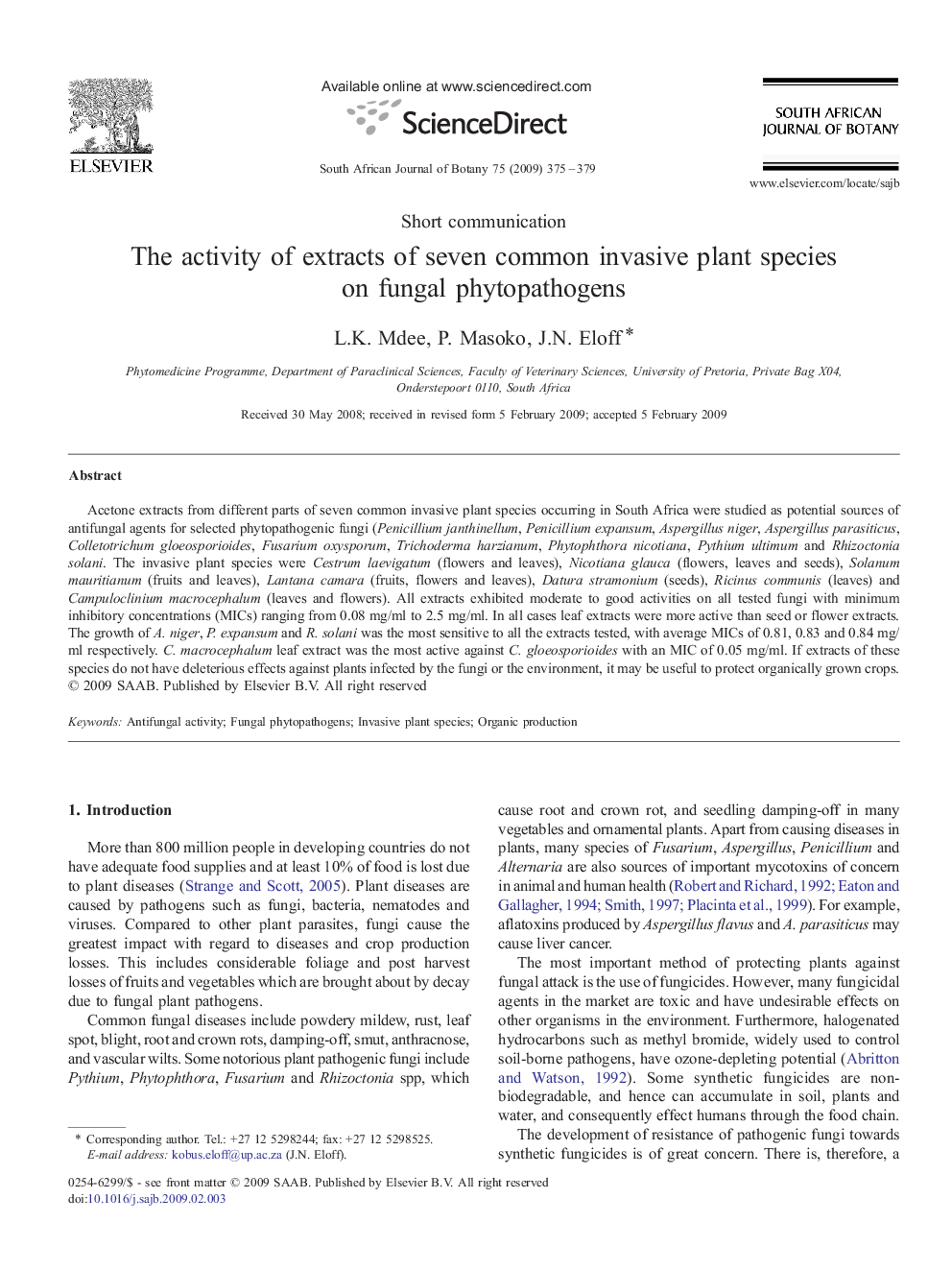| Article ID | Journal | Published Year | Pages | File Type |
|---|---|---|---|---|
| 4522065 | South African Journal of Botany | 2009 | 5 Pages |
Acetone extracts from different parts of seven common invasive plant species occurring in South Africa were studied as potential sources of antifungal agents for selected phytopathogenic fungi (Penicillium janthinellum, Penicillium expansum, Aspergillus niger, Aspergillus parasiticus, Colletotrichum gloeosporioides, Fusarium oxysporum, Trichoderma harzianum, Phytophthora nicotiana, Pythium ultimum and Rhizoctonia solani. The invasive plant species were Cestrum laevigatum (flowers and leaves), Nicotiana glauca (flowers, leaves and seeds), Solanum mauritianum (fruits and leaves), Lantana camara (fruits, flowers and leaves), Datura stramonium (seeds), Ricinus communis (leaves) and Campuloclinium macrocephalum (leaves and flowers). All extracts exhibited moderate to good activities on all tested fungi with minimum inhibitory concentrations (MICs) ranging from 0.08 mg/ml to 2.5 mg/ml. In all cases leaf extracts were more active than seed or flower extracts. The growth of A. niger, P. expansum and R. solani was the most sensitive to all the extracts tested, with average MICs of 0.81, 0.83 and 0.84 mg/ml respectively. C. macrocephalum leaf extract was the most active against C. gloeosporioides with an MIC of 0.05 mg/ml. If extracts of these species do not have deleterious effects against plants infected by the fungi or the environment, it may be useful to protect organically grown crops.
